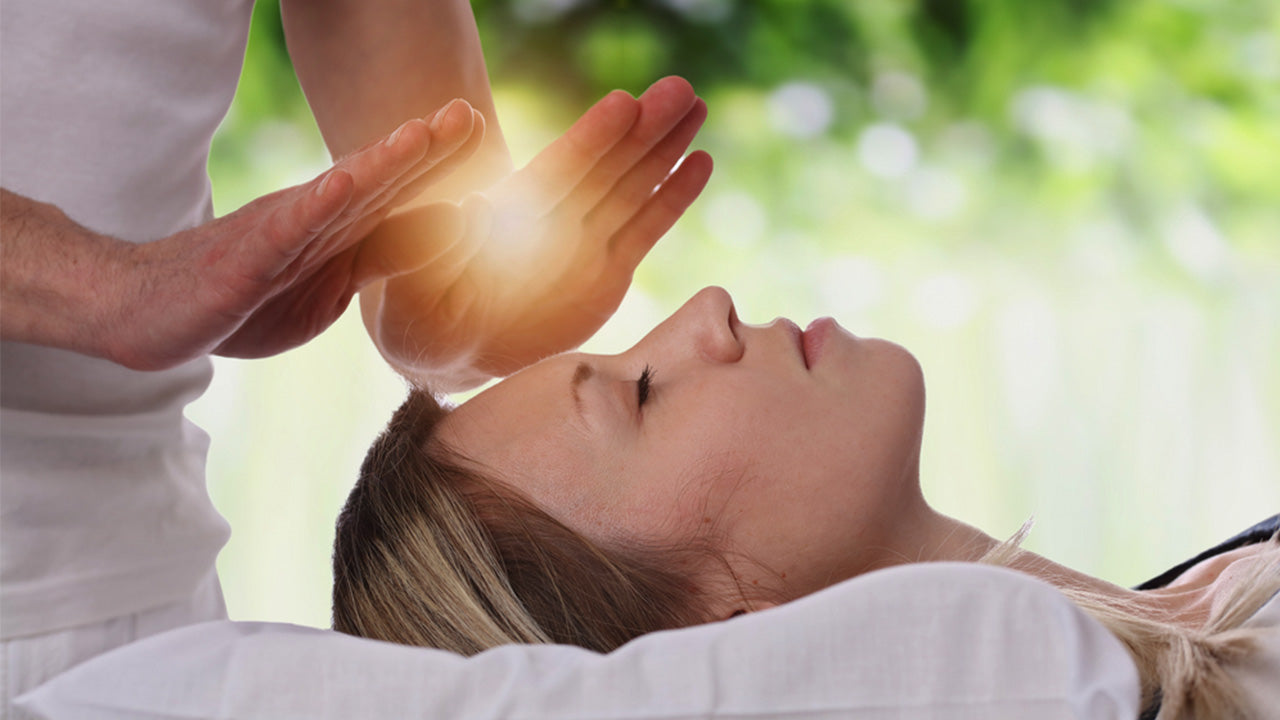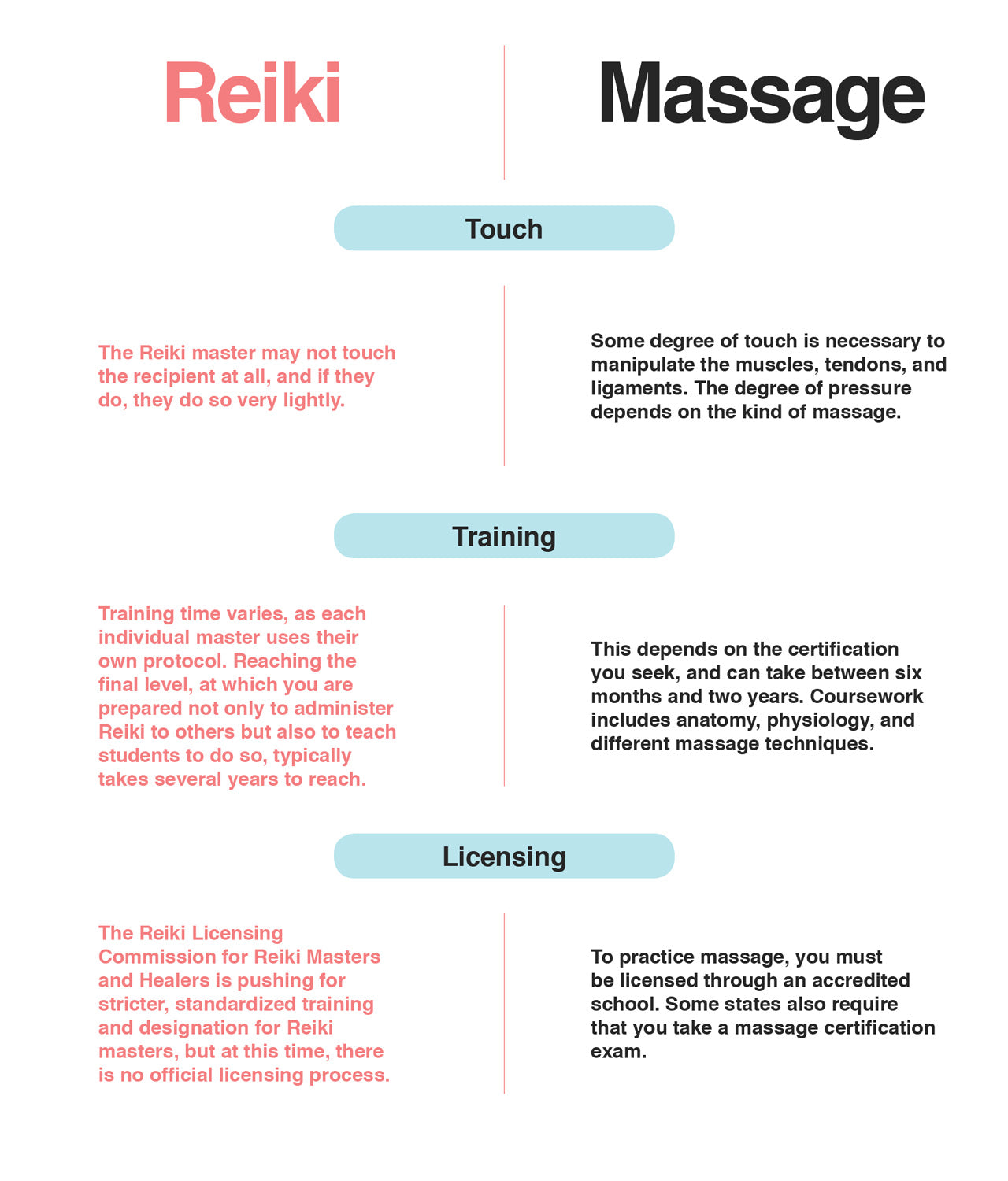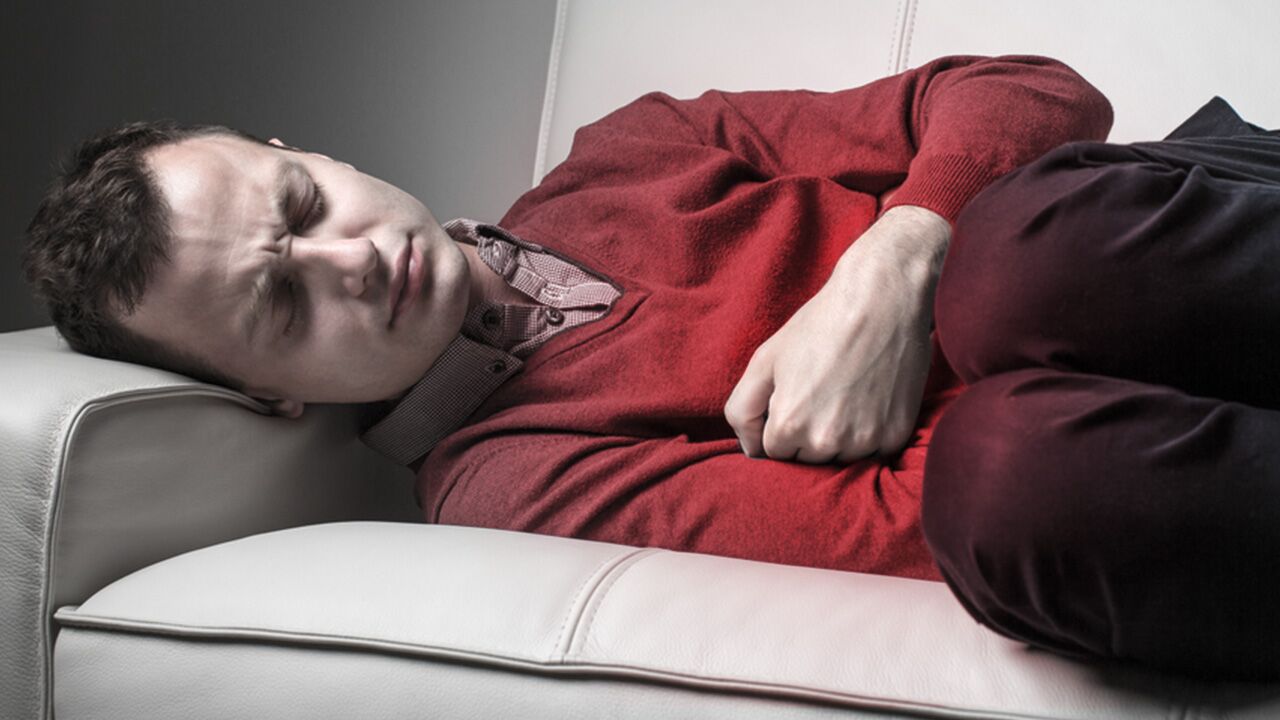What Is Reiki and How Does It Work?
 By: by Amino Science
By: by Amino Science

According to the International Center for Reiki Training, one of the only recognized organizations for Reiki practitioners, “A treatment feels like a wonderful glowing radiance that flows through and around you. Reiki treats the whole person including body, emotions, mind and spirit creating many beneficial effects that include relaxation and feelings of peace, security and well-being. Many have reported miraculous results.” It would be understandable if that explanation left you still wondering exactly what is reiki, and how does it work?
It can be tricky to pin down what reiki is and how it works because this healing modality relies on the exchange of energy, and it can be difficult to talk about something so intangible in concrete terms. The International Center for Reiki Training, founded by Reiki master William Lee Rand, defines Reiki as “a simple, natural, and safe method of spiritual healing and self-improvement that everyone can use.” And though they go on to explain that Reiki can be used to treat “virtually every known illness and malady,” there’s little scientific data at this time to support that claim.
A lack of hard evidence hasn’t prevented millions of individuals from deriving immense benefits from this energetic healing practice. A recent survey found that 1.2 million adults living in the United States had tried Reiki during the previous year, and a Washington Post article reports that more than 60 hospitals now offer Reiki to patients. As Western science has begun to investigate Reiki, the results have been promising.
Whether you’re a naysayer or ready to try Reiki for yourself, this primer will increase your understanding of how Reiki works, what happens during a typical session, what it means to be a Reiki master, the latest scientific findings on Reiki, and more.
What Is Reiki?
Reiki was developed by Dr. Mikao Usui in Tokyo in 1922. In Japanese, the word “rei” encompasses a higher intelligence permeating all living and nonliving beings and shaping the universe itself, and the word “ki” represents the energy that flows through everything that is alive. Ki, often translated as “life force,” is known as qi or chi in other disciplines. The combination of the two words means, essentially, “spiritually guided life force energy.”
Dr. Usui trained several Reiki masters prior to his death to ensure that the healing practice he invented would not die with him. One of those masters, Dr. Chujiro Hayashi, further developed Reiki by adding hand positions to treat the body more completely.
In 1935, a Japanese-American woman named Hawayo Takata came to see Dr. Hayashi. Though she was initially skeptical, she was so impressed by the impact of her first session with him that she began coming back to see him daily. Takata eventually studied Reiki herself and became a Reiki master. She wanted to introduce the healing practice she had found so valuable to new audiences, so after making some tweaks to the method, she imported it to Hawaii. Takata personally trained 22 Reiki masters before she died, and the lineage of all Reiki practitioners working in the United States today can be traced directly back to her.
How Does Reiki Work?
When looked at from a modern, science-based perspective, Reiki is based in the biofield, a type of energy that, according to Shamini Jain, an assistant professor of psychiatry at the University of California-San Diego, “regulates everything from our cellular function to our nervous system.”
The biofield itself, Jain explained, “consists of things that we can measure, like electromagnetic energy that actually emanates from us.” But Reiki remains controversial because it requires that you accept more subtle, less measurable manifestations of the biofield.
During a Reiki session, the practitioner channels “spiritually guided life force energy” through their hands into the body of the recipient. Because the energy is spiritually guided, it flows to the areas of the recipient’s biofield that require healing. This healing can transpire on a mental level—such as the release of anxiety or sadness—or on a physical one—for instance, decreased levels of chronic pain.
While Reiki can be done anywhere, it’s most enjoyable when conducted in a tranquil environment. You can sit or lie down, whichever you prefer, and there’s no need for you to remove any clothing. You can also choose to have music playing or not, whichever sounds better to you.
Over the course of the session, the practitioner will form their hands into different shapes and place them lightly on, or slightly over, specific areas on your head, limbs, and torso. There are 20 total treatment areas. Their hands will remain in each area for between 5 and 20 minutes.
While their hands are in place, the transfer of energy is occuring. This may cause the practitioners hands to give off heat or to tingle. When the practitioner senses that the energy has stopped flowing to that particular area, they will move on to the next one.
A Reiki session can last between 15 and 90 minutes, and the number of sessions needed to treat a specific concern can vary. Some people prefer to try to reach a resolution in a single session, while others find ongoing treatment to be a better option. The cost for a session ranges from $30 to $100, and is not typically covered by insurance unless it’s part of a larger treatment plan.

What Is a Reiki Attunement?
Pamela Miles, a prominent Reiki master who has been practicing since 1986 and who has pioneered the use of Reiki in conventional medical settings, believes the use of the term “attunement” rose to prominence after the death of Hawayo Takata. It’s now the term of choice for many practitioners to describe the process Takata called an initiation (“reiju” in Japanese).
The word initiation points to the core of the attunement process. It’s the beginning of the journey toward Reiki mastery. An initiation lineage is central to many Asian spiritual traditions: the passing of knowledge from a master to the student, by which the student gains the ability to practice that tradition.
During the initiation, or Reiki attunement process, the master opens and expands the main energy channels of the student’s body. This clears away blockages, and many students report experiencing intense periods of self-growth after an attunement.
What Is a Reiki Master?
To become a Reiki master, you must go through a series of attunements. There are a variety of approaches to teaching Reiki, meaning there are also a variety of paths that might lead you to becoming a master. No matter which path you travel, however, becoming a master represents a deep commitment to the Reiki practice. Here’s an overview of the different levels you would pass through on that journey.
Reiki Level 1
This level is open to anyone, and usually features a discussion of the history of Reiki. Many Reiki Masters describe the focus of this level as learning to administer self-Reiki. Students tune into their life force energy and use Reiki to work through their own obstacles. Traditionally, Level 1 involved four separate attunements. It’s now common for Reiki masters to combine those into a single attunement. Students may begin to feel physical manifestations of energy in their palms—like coolness, tingling, or heat—as they progress through this level.
Reiki Level 2
A Level 1 attunement is a prerequisite for Level 2. Some Reiki masters advise that students who have received the Level 1 attunement wait between 21 days and three months before receiving the Level 2 attunement, as the process is quite intense. Other Reiki masters, however, combine Level 1 and Level 2, sometimes giving both attunements over the course of a weekend. The Level 2 attunement, typically given in a single session, focuses on the central heart channel. Students receive the Reiki symbols, which allow practitioners to connect more deeply to the guiding spiritual energy and to draw from the qualities represented by each symbol. This level also introduces the practice of sending healing energy over a distance.
Reiki Level 3
Level 3 is traditionally considered the teacher’s level. Students who receive the Level 3 attunement attain the energy and knowledge needed to attune new Reiki students themselves. Some students may receive the Master attunement but not feel ready to attune others, a distinction mirrored in the way some Masters teach this level, giving two attunements to differentiate between simply receiving the Master attunement and being trained in attuning new students.
What Is Reiki Healing?
Reiki is rooted in a holistic perspective, so it prioritizes the health of the body as a whole and bringing all its systems into balance. This makes Reiki an ideal treatment for complex, multi-systemic conditions as well as for constellations of symptoms associated with chronic diseases, autoimmune disorders, and potentially endometriosis.
Hospitals, clinics, and hospice programs have begun to explore the benefits of Reiki. So far, studies have found it to be especially helpful as a treatment, or component of a treatment plan, for the following three conditions.
1. Cancer
Individual cancer patients who have received Reiki often speak of its ability to relieve stress and decrease pain, among other benefits. The latest research supports this claim, indicating that Reiki has significant promise as a means of relieving common, and sometimes debilitating, cancer-related symptoms.
One study published in peer-reviewed Integrative Cancer Therapies enrolled adults receiving treatment at an academic medical oncology center and found that a single Reiki session lead to over a 50% decrease in self-reported distress. Of the 213 participants, 82.6% liked the Reiki session and found it helpful, 82.2% percent would recommend Reiki to their friends, and 73.7% stated that they planned to continue receiving Reiki.
Another study conducted over a six-month period and published in the American Journal of Hospice & Palliative Care investigated how receiving Reiki affected symptoms like mood, sleep, and pain. The researchers found the following results from a total of 145 participants:
- 89% of participants reported increased relaxation
- 81% said Reiki improved their mood
- 75% said it decreased anxiety and worry
- 75% said it improved their attitude
- 45% said it reduced their pain
- 43% said it improved their sleep
- 38% said it reduced their sense of loneliness and isolation
Since Reiki has virtually no side effects, many experts feel it could make a wonderful complement to conventional cancer treatments.
2. Anxiety and Depression
In 2005, William Lee Rand, the founder of the International Center for Reiki Training mentioned earlier, developed The Touchstone Process, a peer-reviewed system for analyzing the latest data on Reiki. Data analyzed between 2008 and 2009 found that in experiments with lab rats, which allow for more variables to be controlled than in virtually any other setting, Reiki treatments led to significant reductions in stress, anxiety, and depression. Those results are made even more convincing by the fact that the researchers gave a second placebo group of rats “sham” Reiki treatments, which brought about zero decreases in stress, anxiety, and depression responses.
3. Chronic Pain
Data gathered, analyzed and evaluated through The Touchstone Process from studies of the benefits of Reiki that enrolled human subjects and were carried out between 1993 and 2006 all indicate that Reiki sessions can reduce pain levels. Ratings for the effectiveness of Reiki in treating pain ranged from Satisfactory to Excellent, and placebo treatments proved ineffective by comparison.
What Is Reiki Massage?
Reiki and massage both work with your body and its energy to facilitate natural healing processes. Given the degree to which the principles and techniques of these two modalities overlap, it only makes sense that a hybrid form of the two—reiki massage—has been developed.

“Professional massage therapists are naturally in tune with the human body and its energy, blockages, and flow,” reiki expert Linda LaFlamme said in an interview. “Adding a healing energy technique such as Reiki is a perfect complement.”
According to Rand, approximately 10% of the students in his Reiki trainings are professional massage therapists. “You can actually be giving Reiki at the same time you’re doing a massage,” he said.
Weaving Reiki into a massage session can augment the benefits of the treatment for the recipient. It can also break up a session, since it’s done with a gentle, static touch that offers a contrast to more vigorous massage styles.

If you are looking for alternative therapeutics with proven healing benefits, we encourage you to explore how amino acid supplements can help with your most pressing health issues.

Up to 25% off Amino
Shop NowTAGS: natural cures
Join the Community
Comments (0)
Most Craveable Recipes




 833-264-6620
833-264-6620



















